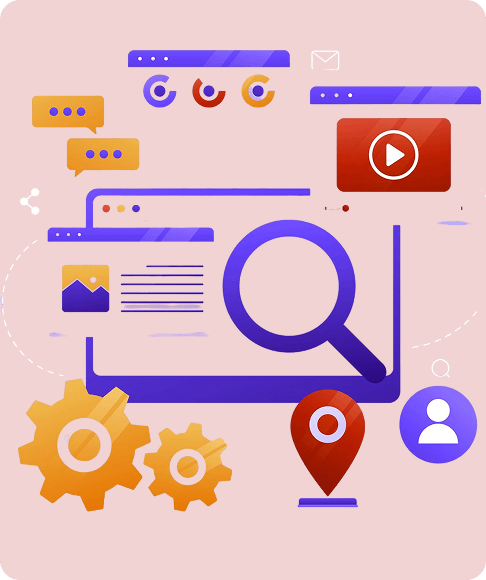Top Tools Every Business Should Use to Streamline Operations
In today’s fast-paced business environment, leveraging digital tools is essential to stay competitive. Whether you’re a small startup or an established enterprise, the right tools can dramatically improve efficiency, collaboration, and productivity across your organization.


In today’s fast-paced business environment, leveraging digital tools is essential to stay competitive. Whether you’re a small startup or an established enterprise, the right tools can dramatically improve efficiency, collaboration, and productivity across your organization. Here’s a look at some must-have digital tools that can help streamline operations across various departments in your business.

1. Project Management: Trello and Asana
SEffective project management is crucial for meeting deadlines and achieving goals. Trello and Asana are two of the most popular project management tools that offer intuitive interfaces and powerful features to keep your teams on track.
- Trello: Known for its simplicity and visual approach, Trello uses boards, lists, and cards to organize tasks and projects. It’s perfect for teams that prefer a visual overview of their work.
- Asana: Asana offers more advanced features like timeline views, custom workflows, and task dependencies, making it ideal for larger teams or more complex projects.
Both tools enhance collaboration by allowing team members to assign tasks, set deadlines, and comment on project progress in real-time.

2. Communication: Slack and Microsoft Teams
Seamless communication is the backbone of any successful business. Slack and Microsoft Teams are leading tools that facilitate instant messaging, file sharing, and video conferencing, all within one platform.
- Slack: Slack is known for its user-friendly interface and integration capabilities with other tools like Google Drive, Trello, and Salesforce. It supports channel-based communication, making it easy to organize conversations by project or department.
- Microsoft Teams: Part of the Microsoft 365 suite, Teams integrates deeply with other Microsoft products like Word, Excel, and Outlook. It’s a great choice for businesses already using Microsoft’s ecosystem.
Both tools also support video calls, screen sharing, and document collaboration, making remote work more manageable and efficient.

3. Document Management: Google Workspace and Dropbox Business
Managing documents and ensuring that the right people have access to them when needed is critical. Google Workspace and Dropbox Business are powerful tools for document management and collaboration.
- Google Workspace: Formerly known as G Suite, Google Workspace offers cloud-based tools like Google Docs, Sheets, and Slides, allowing multiple users to collaborate in real-time. It also provides generous cloud storage and easy sharing options.
- Dropbox Business: Dropbox is a robust file storage and sharing solution that offers advanced security features and seamless integration with other tools. It’s especially useful for businesses that need to share large files regularly.
These tools not only streamline document management but also enhance team collaboration by ensuring that everyone has access to the latest versions of important files.

4. Customer Relationship Management (CRM): Salesforce and HubSpot
A CRM system is essential for managing interactions with current and potential customers. Salesforce and HubSpot are two of the most widely used CRM platforms that offer comprehensive features for sales, marketing, and customer service teams.
- Salesforce: Salesforce is a powerhouse CRM tool with customizable dashboards, detailed analytics, and a wide range of integrations. It’s ideal for large enterprises looking for a scalable solution.
- HubSpot: HubSpot offers a more user-friendly interface and is great for small to mid-sized businesses. It combines CRM with marketing, sales, and customer service tools, making it a versatile option for growing companies.
Both CRM tools help businesses streamline their sales processes, track customer interactions, and improve overall customer satisfaction.

5. Time Management: Toggl and Clockify
Time is a precious resource, and managing it effectively is key to productivity. Toggl and Clockify are time-tracking tools that help businesses monitor how time is spent on various tasks and projects.
- Toggl: Toggl offers a simple yet powerful time-tracking interface with features like project tracking, reporting, and integrations with other tools like Asana and Trello.
- Clockify: Clockify is a free time-tracking tool that offers unlimited tracking for users and projects. It’s perfect for businesses that need a cost-effective solution for time management.
These tools help teams identify time sinks, optimize workflows, and ensure that billable hours are accurately recorded.

6. Accounting and Finance: QuickBooks and Xero
Keeping your finances in order is crucial for business success. QuickBooks and Xero are two leading accounting tools that offer comprehensive features for managing your company’s finances.
- QuickBooks: QuickBooks is a versatile accounting tool that offers invoicing, payroll management, expense tracking, and financial reporting. It’s ideal for small to medium-sized businesses looking for an all-in-one accounting solution.
- Xero: Xero offers a similar range of features but is known for its clean interface and strong integration capabilities with other business tools. It’s particularly popular among startups and small businesses.
Both tools provide the financial insights needed to make informed decisions and keep your business on the right track.

7. Automation: Zapier and IFTTT
Automation is a game-changer for businesses looking to save time and reduce manual tasks. Zapier and IFTTT are two powerful automation tools that allow you to connect different apps and automate workflows.
- Zapier: Zapier is a leader in automation, offering “Zaps” that connect apps like Gmail, Slack, and Salesforce. It’s perfect for businesses that want to automate repetitive tasks and improve efficiency.
- IFTTT (If This Then That): IFTTT offers similar automation capabilities but is more focused on connecting consumer apps and devices. It’s a great tool for businesses that want to integrate apps with IoT devices.
Both tools help businesses save time by automating tasks like data entry, file uploads, and notifications.

Conclusion
Incorporating these digital tools into your business operations can significantly enhance efficiency, collaboration, and productivity. By streamlining processes and automating tasks, you can free up valuable time and resources to focus on what really matters—growing your business. Whether you’re managing projects, communicating with your team, or tracking your finances, these tools are essential for any business looking to thrive in today’s competitive landscape.
